Overview of the Design thinking Process
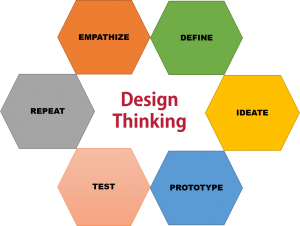
If you have just started embarking your journey through the Design Thinking process, things might seem a little overwhelming. to help you with, we have prepared an overview of the complete Design Thinking process which you can use as your guide whenever you feel like getting a hold on the topic!!
To begin with, let’s have a quick overview of the fundamental principles of Design Thinking. Creativity is the fundamental aspect or the base on which the pyramid of design thinking is stabilized. The entire process of design thinking is divided into 5 major categories (Empathy, Define, Ideate, Prototype Creation and Prototype Testing).
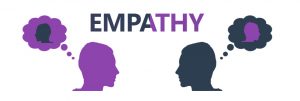
Design Thinking starts with empathy, a deep insight into human focus. Any social endeavor begins with the human element. It involves identifying the molecules that make up your target audience, getting under their skin and finding out what they value, what they want and how they look at the world. Without the understanding of what others see, feel, and experience, design is a pointless task.
When communicated in a constructive manner, empathy can be truly inspirational and life changing. The foundation of empathic design is observation and the goal is to identify latent customer needs in order to create products that the customers don’t even know they desire or, in some cases, solutions that customers have difficulty envisioning due to lack of familiarity with the possibilities offered by new technologies or because they are locked in an old mindset.
Here are few of questions you must consider when empathetically engaging with your customers…
1. What is the person feeling?
2. What actions or words indicate this feeling?
3. Can you identify their feelings through words?
4. What words would you use to describe their feelings?
These are just some of the guided questions that you can use to identify the problem or how your customers are feeling about it.
The 3-steps technique that you can use to take actions while empathizing is first, to “Observe” you prospect, then to “Engage” them to learn their real need, and finally “Understand” your customer’s real need through deep observation and by making them comfortable to open up in front of you.
Always remember that your customers might not know what they really want, so being a creative designer, it is your duty to figure it out using these 3-powerful techniques.
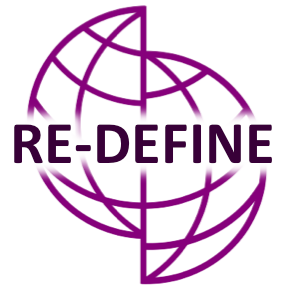
It involves re-framing the perceived problem or challenge at hand, and gaining perspectives, which allow a more holistic look at the path towards these preferred situations. This step is to define the feelings and identify the main problem to be solved.
It’s important that, throughout this process you must use language that is identifiable, positive, meaningful, and actionable.
Instead of focusing on the negative side of the problem and the lack of options, steer your customers to using language that is positive, empathetic, and will direct them toward solution-based thinking. Defining the problem is part of the process of shaping a point of view — our own and of others — about the problem. Therefore, the framing should inspire the group, the student, or the entire team to find solutions.
Defining the problems can be carried out with the help of two major steps…
First being, “Visualization”. This step helps you and your team to have a through walk-through of the problem and examining the problem more closely.
Second is, “Brainstorming”. The main importance of this process is it helps generate as many ideas as possible. This is a group activity, and it can be carried out in a controlled environment. The purpose of a brainstorming session is to work as a group to come up with lots and lots of creative ideas, in a short period of time.
It encourages collaborative, multi-disciplinary teamwork to leverage the skills, personalities and thinking styles of many in order to solve multifaceted problems.
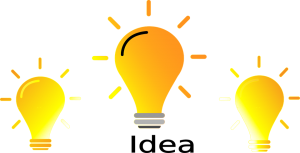
The third step is the process of “Idea generation”.
Ideation is important in order for the transition from identifying problems to creating solutions for your users. Ideation is your chance to combine the understanding you have of the problem space and people you are designing for with your imagination to generate solution concepts.
Particularly early in your design project, ideation is about pushing for a widest possible range of ideas from which you can select, not simply finding a single, best solution. The determination of the best solution will be discovered later, through user testing and feedback.
It initially employs divergent styles of thinking to explore as many possibilities, deferring judgment and creating an open ideations space to allow for the maximum number of ideas and points of view to surface. It later employs convergent styles of thinking to isolate potential solution streams, combining and refining insights and more mature ideas, which pave a path forward. In this process, you select few ideas with potential solutions from the bunch of ideas you had generated in the define stage of the design thinking process.
This step encourages the power of learning by doing, which will further allow you to gain insight into the viability of solutions before too much time or money has been spent.
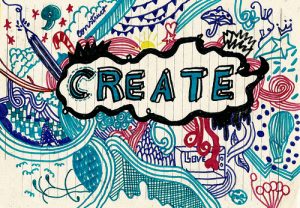
Forth step is “Creating Prototype”. By now you must have come up with the most useful and functional idea from the entire heap of the ideas you have had in the previous processes. This idea of yours is the prototype of the problem you are mostly focusing on to solve.
Well! The Prototype mode is the iterative generation of artifacts intended to answer questions that get you closer to your final solution. A prototype can be anything that a user can interact with – be it a wall of post-it notes, a gadget you put together, a role-playing activity, or even a storyboard.
Ideally you bias toward something a user can experience. Walking someone through a scenario with a storyboard is good but having them role-play through a physical environment that you have created will likely bring out more emotions and responses from that person.
Prototype is the first step in creating something incredible for customers. This is the ONLY step where you test to fail and re-build to win.

Last but not the least, “Prototype Testing Phase”.
Testing is another opportunity to understand your user, but unlike your initial empathy mode, you have now likely done more framing of the problem and created prototypes to test. Both these things tend to focus the interaction with users, but don’t reduce your “testing” work to just asking whether or not people like your solution.
Ideally you can test within a real context of the user’s life. For a physical object, ask people to take it with them and use it within their normal routines. For an experience, try to create a scenario in a location that would capture the real situation. If testing a prototype in situ is not possible, frame a more realistic situation by having users take on a role or task when approaching your prototype.
A rule of thumb that you must always remember: always prototype as if you know you’re right, but test as if you know you’re wrong—testing is the chance to refine your solutions and make them better.
While prototype testing always encourages any feedback, you receive about your product, never ever be defensive about your product. Let them come up with their point of view on the prototype.
Take note of it and use this extensive collection of data to improve your prototype to become consumer favorite.
Good Luck for Your Next Endeavor!
